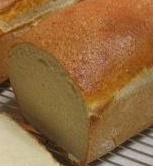Manchet facts for kids

Manchet loaf
|
|
| Type | bread |
|---|---|
| Place of origin | Britain |
| Region or state | France |
| Main ingredients | flour |
| Variations | Bath bun, Sally Lunn bun |
A manchet (also called manchette or michette in French) is a special kind of bread. It's a small, round loaf made from fine wheat flour and yeast. People could hold this bread easily in their hand or even in a glove! It was known for being very good quality.
Contents
History of Manchet Bread
Manchet bread has a long and interesting history. It was a popular bread in Britain many years ago.
Early Recipes and Books
One of the first recipes for manchet bread was printed in 1588. It appeared in a book called The Good Huswifes Handmaide. The author of this book is unknown. The recipe explained that the flour needed to be very fine. It also had to be "boulted" (sifted) twice.
Later, in 1932, a classic English cooking book was published. It was called Good Things in England by Florence White. This book mentioned several recipes for manchets. It even included five different versions from various parts of England. One old quote from 1615 described manchet as 'Your best and principal bread'.
Manchets for Royalty
Manchets were once a very fancy bread. They were often eaten by wealthy people and even royalty. In 1526, during the time of King Henry VIII, there was a special rule. It mentioned "Manchetts for the Queen's Maides." This shows that manchets were part of royal meals. They were a luxury because the best ingredients were expensive. The finest wheat for manchets came from Heston, near Hounslow, during Queen Elizabeth I's reign.
Breakfast in Old Times
Imagine breakfast for a noble family long ago! In the 1500s, a powerful lord named Henry Percy ate manchets. His breakfast included "2 manchets" along with other foods. His sons also had a manchet with their meal. This shows how important this bread was for important families.
Different Kinds of Manchets
Florence White's book also talked about different types of manchets. There was a Cornish manchet and one from the Isle of Wight. A special recipe from Sussex was called "Lady Arundel's Manchet." This version was unique because it included butter, eggs, and milk. This recipe was first printed in 1653.
Manchets Today
Manchets even traveled across the ocean to America with early settlers. Today, traditional manchets are not made very often. However, some famous breads like the Bath bun and Sally Lunn bun are similar. They are still made and sold today. Some food historians believe manchets were the "ancestors" of French rolls from the 1700s.

